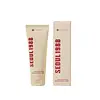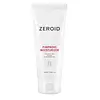What's inside
What's inside
 Key Ingredients
Key Ingredients

 Benefits
Benefits

 Concerns
Concerns

 Ingredients Side-by-side
Ingredients Side-by-side

Snail Secretion Filtrate
Skin ConditioningCaprylic/Capric Triglyceride
Masking1,2-Hexanediol
Skin ConditioningCetearyl Alcohol
EmollientDimethicone
EmollientWater
Skin ConditioningCetearyl Olivate
Carbomer
Emulsion StabilisingArginine
MaskingBenzyl Glycol
SolventSorbitan Olivate
EmulsifyingOryza Sativa Bran Water
MaskingAllantoin
Skin ConditioningSodium Polyacrylate
AbsorbentEthylhexylglycerin
Skin ConditioningDisodium EDTA
Butylene Glycol
HumectantOryza Sativa Extract
AbsorbentRice Ferment Filtrate
Skin ConditioningPanthenol
Skin ConditioningEctoin
Skin ConditioningSodium Hyaluronate
HumectantSnail Secretion Filtrate, Caprylic/Capric Triglyceride, 1,2-Hexanediol, Cetearyl Alcohol, Dimethicone, Water, Cetearyl Olivate, Carbomer, Arginine, Benzyl Glycol, Sorbitan Olivate, Oryza Sativa Bran Water, Allantoin, Sodium Polyacrylate, Ethylhexylglycerin, Disodium EDTA, Butylene Glycol, Oryza Sativa Extract, Rice Ferment Filtrate, Panthenol, Ectoin, Sodium Hyaluronate
Water
Skin ConditioningGlycerin
HumectantCaprylic/Capric Triglyceride
Masking1,2-Hexanediol
Skin ConditioningPolyglyceryl-10 Distearate
EmulsifyingStearic Acid
CleansingTocopherol
AntioxidantSodium Polyacrylate
AbsorbentAllantoin
Skin ConditioningMyristoyl/Palmitoyl Oxostearamide/Arachamide Mea
Skin ConditioningOleamide Mea
Carbomer
Emulsion StabilisingArginine
MaskingPhytosterols
Skin ConditioningDimethyl Isopropanolamine
BufferingSodium Hyaluronate
HumectantBeta-Glucan
Skin ConditioningWater, Glycerin, Caprylic/Capric Triglyceride, 1,2-Hexanediol, Polyglyceryl-10 Distearate, Stearic Acid, Tocopherol, Sodium Polyacrylate, Allantoin, Myristoyl/Palmitoyl Oxostearamide/Arachamide Mea, Oleamide Mea, Carbomer, Arginine, Phytosterols, Dimethyl Isopropanolamine, Sodium Hyaluronate, Beta-Glucan
 Reviews
Reviews

Ingredients Explained
These ingredients are found in both products.
Ingredients higher up in an ingredient list are typically present in a larger amount.
1,2-Hexanediol is a synthetic liquid and another multi-functional powerhouse.
It is a:
- Humectant, drawing moisture into the skin
- Emollient, helping to soften skin
- Solvent, dispersing and stabilizing formulas
- Preservative booster, enhancing the antimicrobial activity of other preservatives
Allantoin is a soothing ingredient known for its protective and moisturizingg properties. Because of this, it is often added to products with strong active ingredients.
Studies show higher concentrations of this ingredient can promote wound healing.
Though it can be derived from the comfrey plant, allantoin is produced synthetically for cosmetic products to ensure purity.
Learn more about AllantoinArginine is an amino acid that is important for human development. Your body uses is it to produce hair keratin and skin collagen.
As a cosmetic ingredient, Arginine has antioxidant properties and can also help repair damaged skin. This ingredient is derived either synthetically or from animals.
Arginine isn't fungal acne safe when used in the presence of other lipids (fats, fatty acids, oils, esters, etc). Oils and fats occur naturally within the skin, so take caution when using Arginine if you're prone to fungal acne.
Learn more about ArginineThis ingredient is an emollient, solvent, and texture enhancer. It is considered a skin-softener by helping the skin prevent moisture loss.
It helps thicken a product's formula and makes it easier to spread by dissolving clumping compounds.
Caprylic Triglyceride is made by combining glycerin with coconut oil, forming a clear liquid.
While there is an assumption Caprylic Triglyceride can clog pores due to it being derived from coconut oil, there is no research supporting this.
Learn more about Caprylic/Capric TriglycerideCarbomer is a polymer of acrylic acid. Its main role is to create a gel consistency.
A high amount of carbomer can cause pilling or balling up of products. Don't worry, most products contain 1% or less of carbomer.
Sodium Hyaluronate is hyaluronic acid's salt form. It is commonly derived from the sodium salt of hyaluronic acid.
Like hyaluronic acid, it is great at holding water and acts as a humectant. This makes it a great skin hydrating ingredient.
Sodium Hyaluronate is naturally occurring in our bodies and is mostly found in eye fluid and joints.
These are some other common types of Hyaluronic Acid:
Learn more about Sodium HyaluronateSodium Polyacrylate is the sodium salt of polyacrylic acid. It is used as an absorber, emollient, and stabilizer.
This ingredient is a super-absorbent polymer - meaning it can absorb 100 to 1000 times its mass in water. As an emollient, Sodium Polyacrylate helps soften and soothe skin. Emollients work by creating a barrier to trap moisture in. This helps keep your skin hydrated.
Water. It's the most common cosmetic ingredient of all. You'll usually see it at the top of ingredient lists, meaning that it makes up the largest part of the product.
So why is it so popular? Water most often acts as a solvent - this means that it helps dissolve other ingredients into the formulation.
You'll also recognize water as that liquid we all need to stay alive. If you see this, drink a glass of water. Stay hydrated!
Learn more about Water